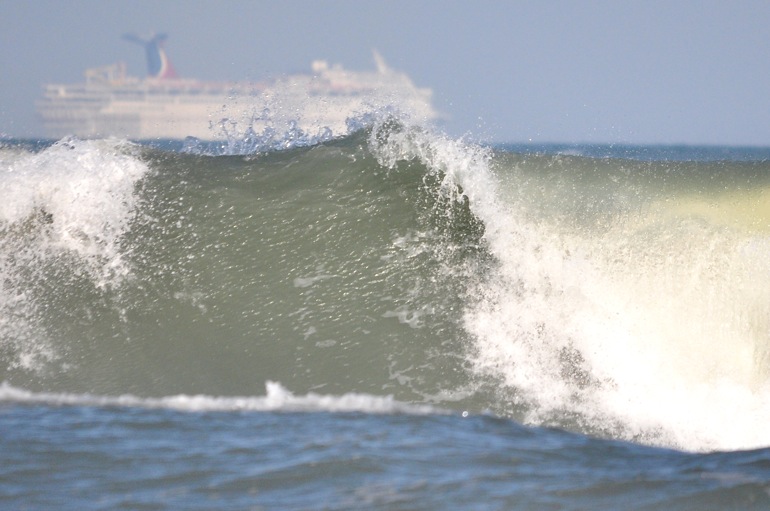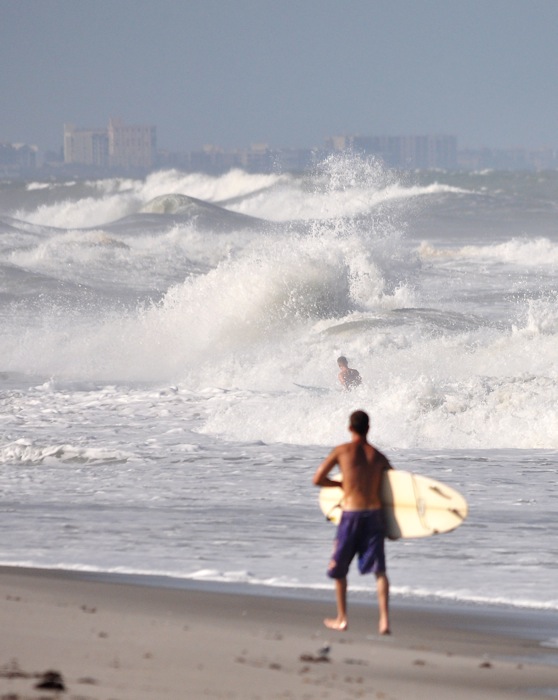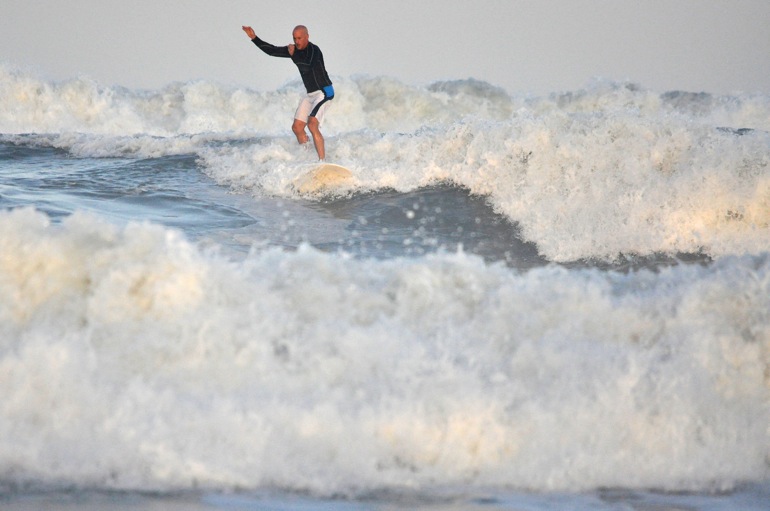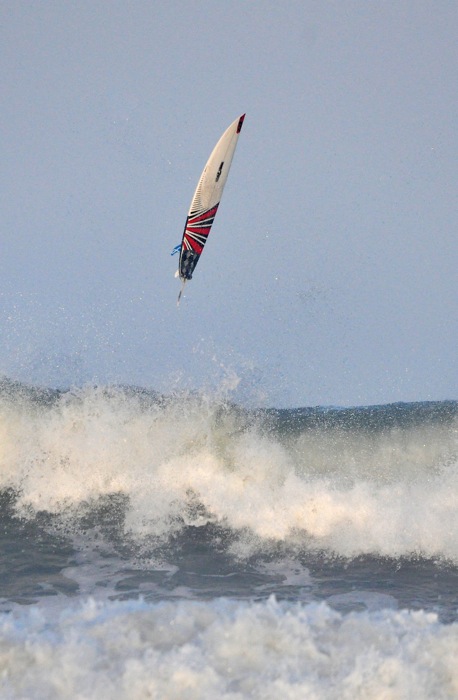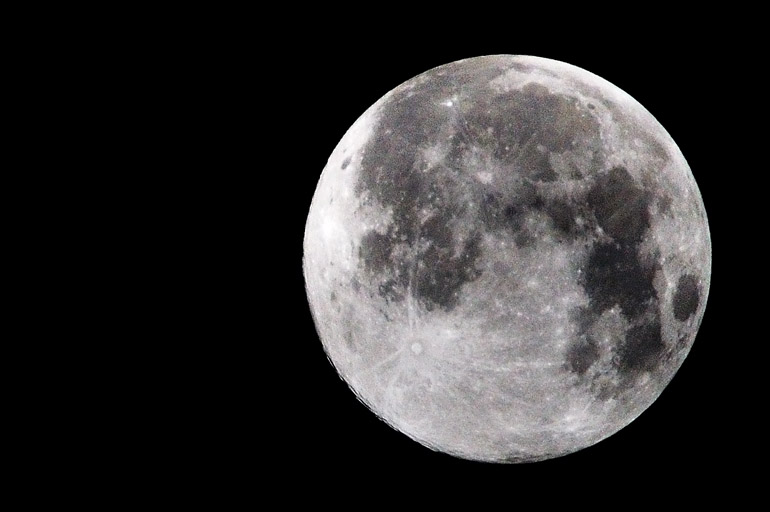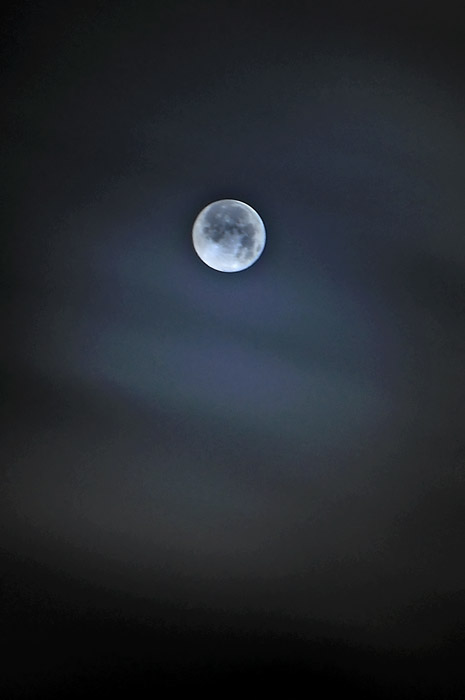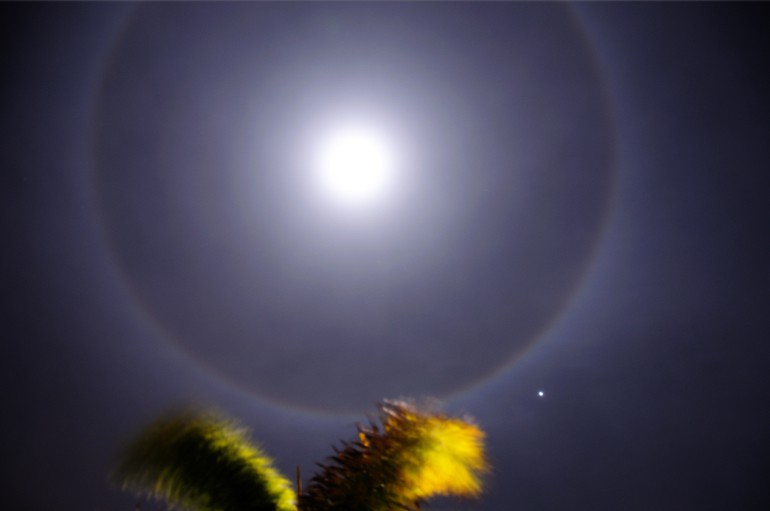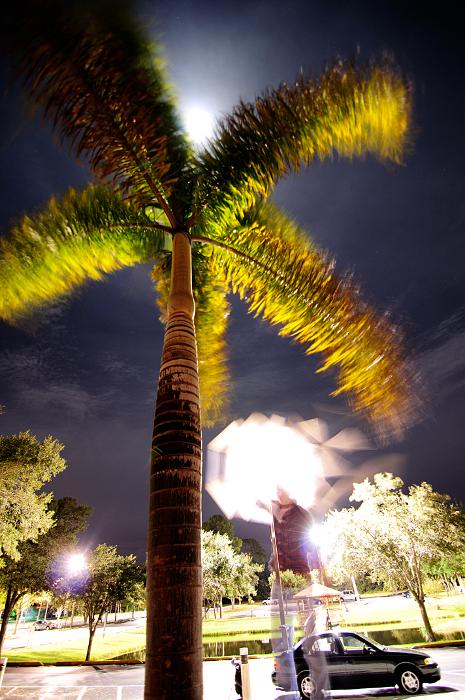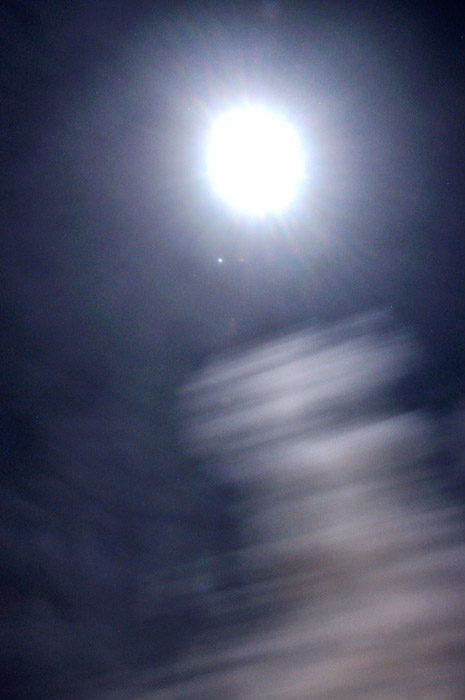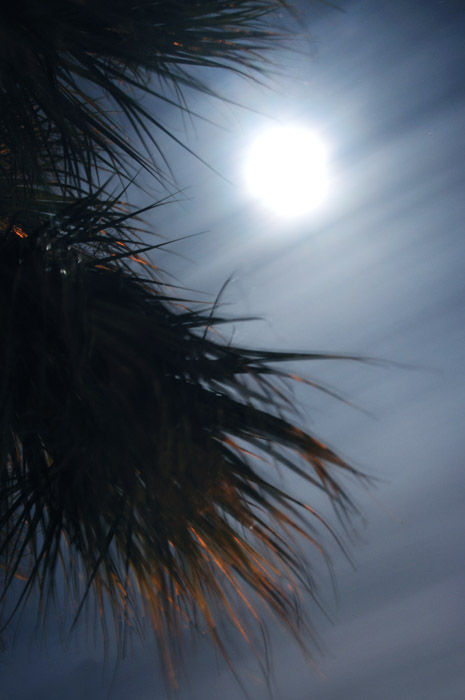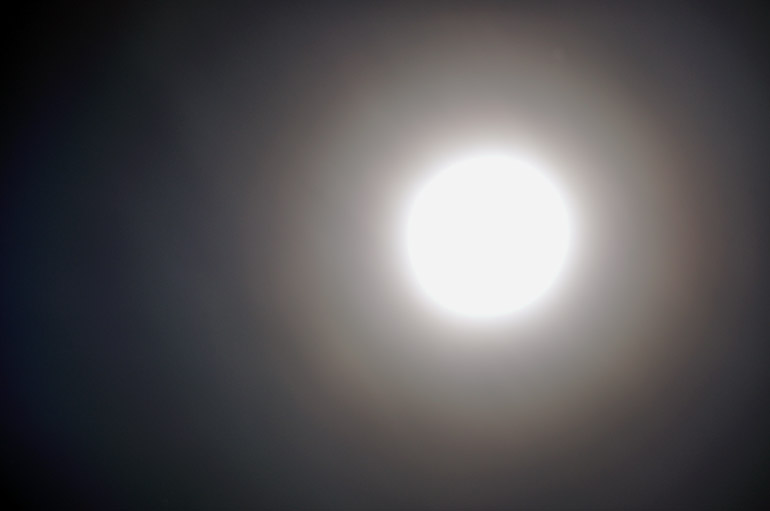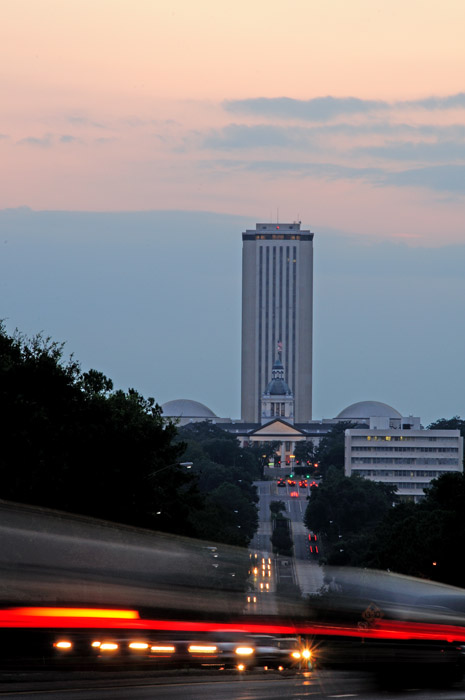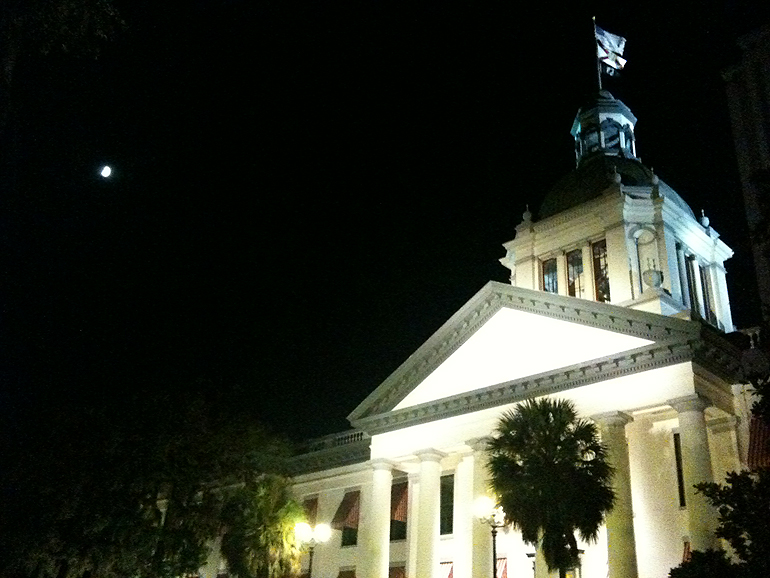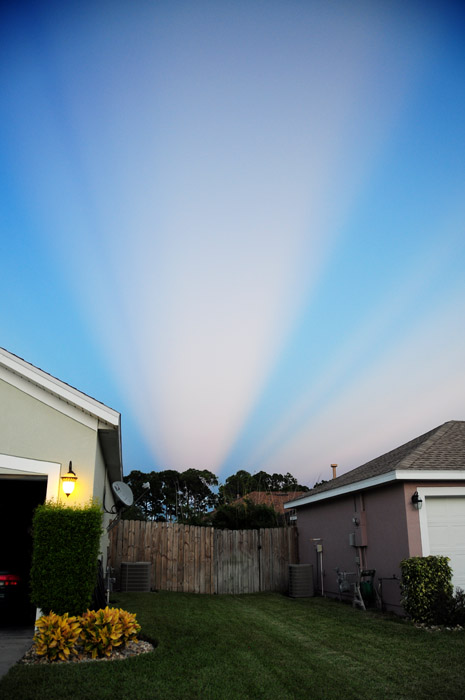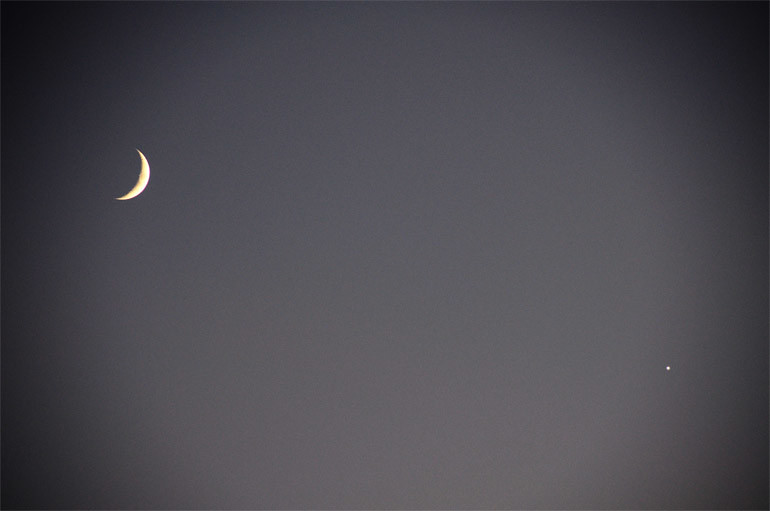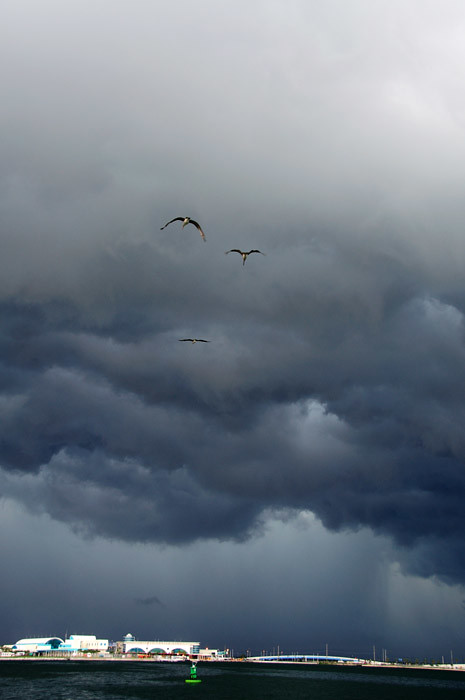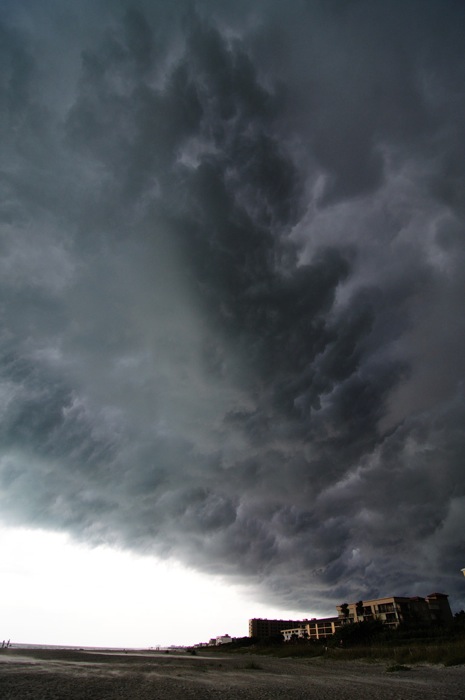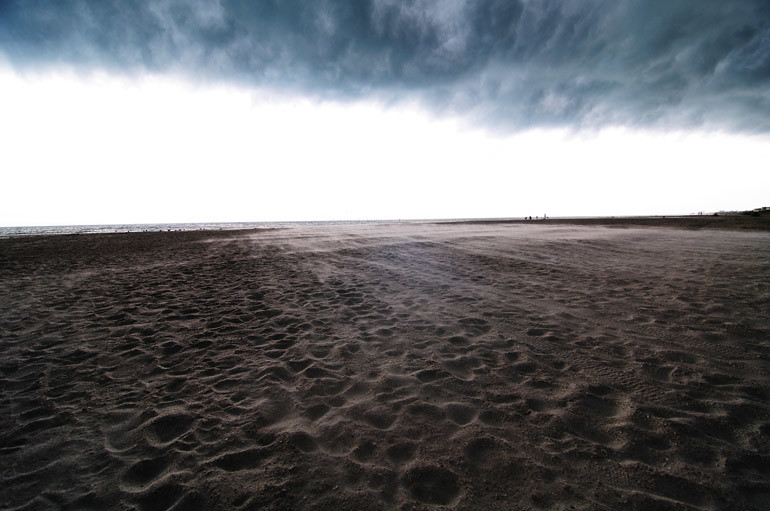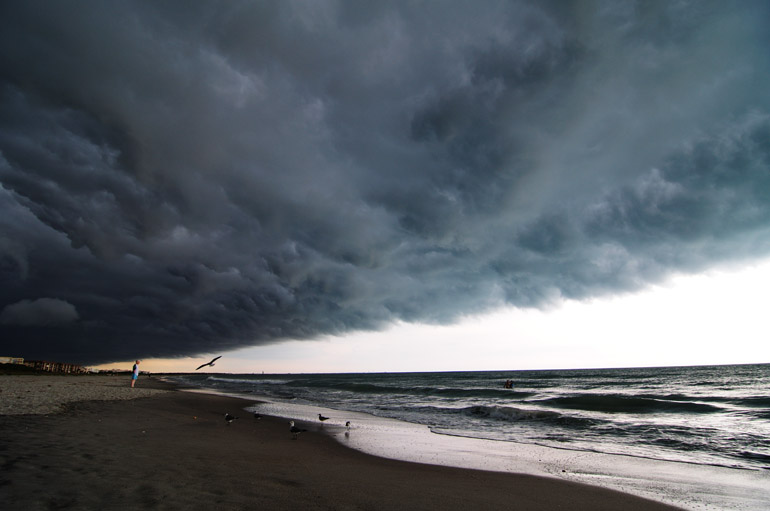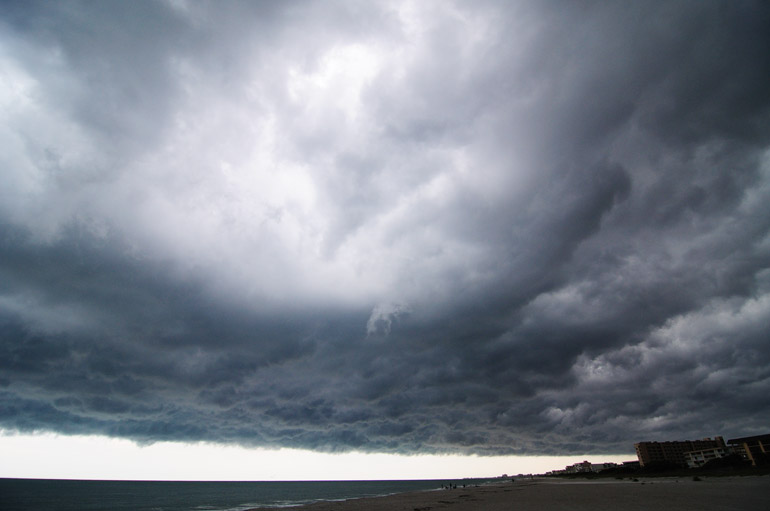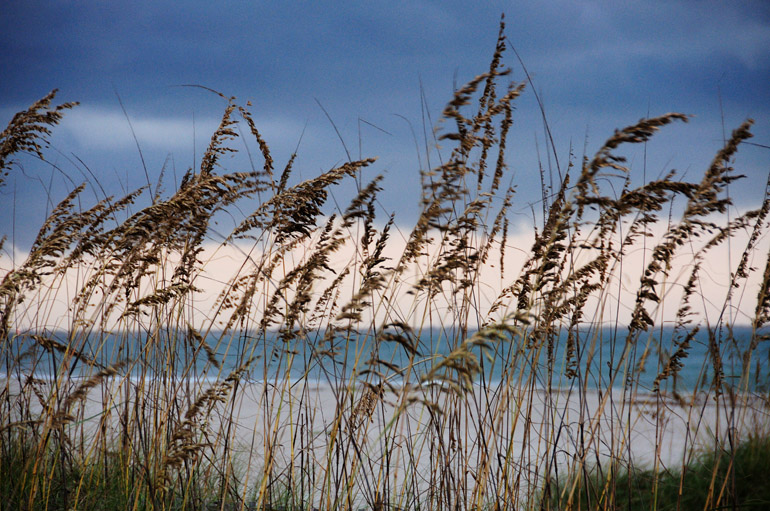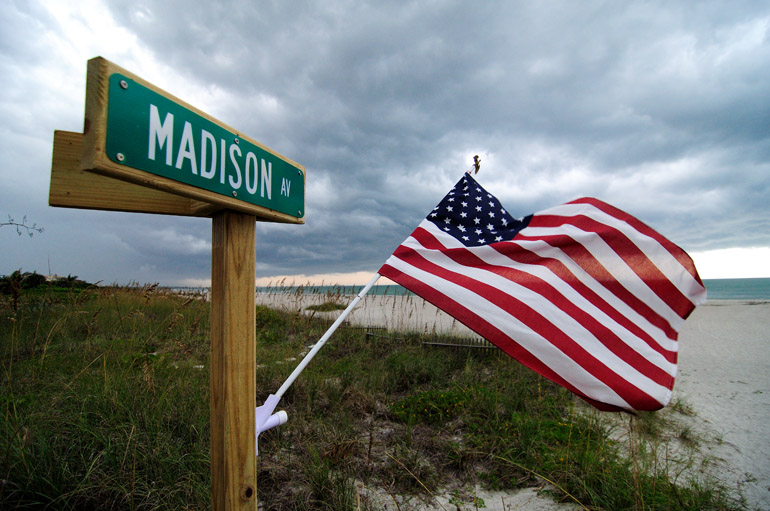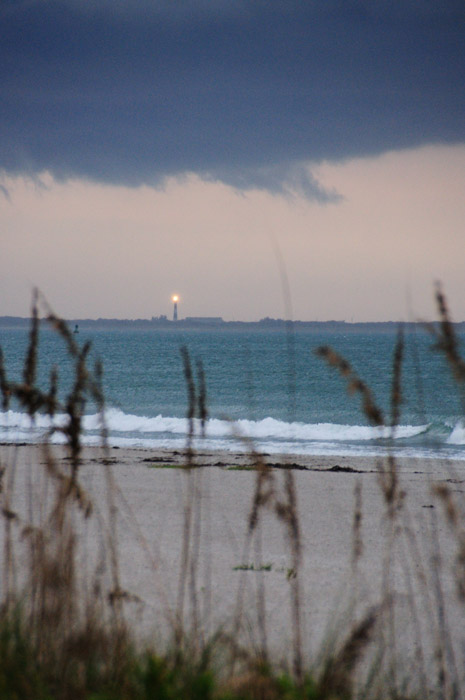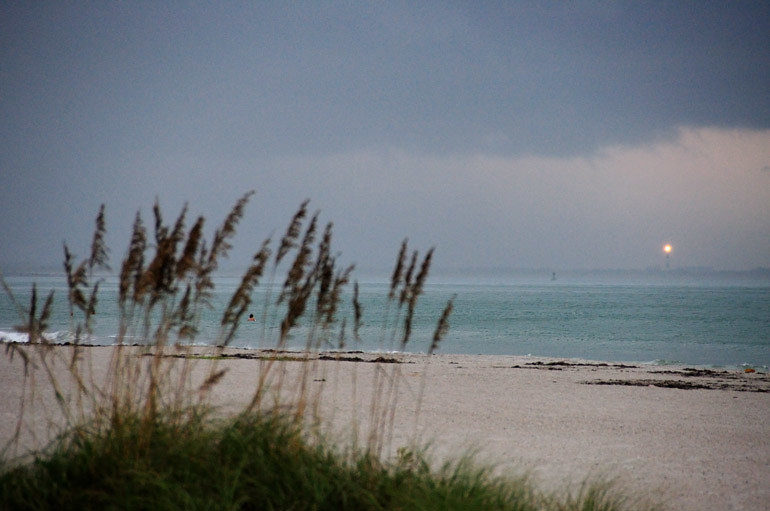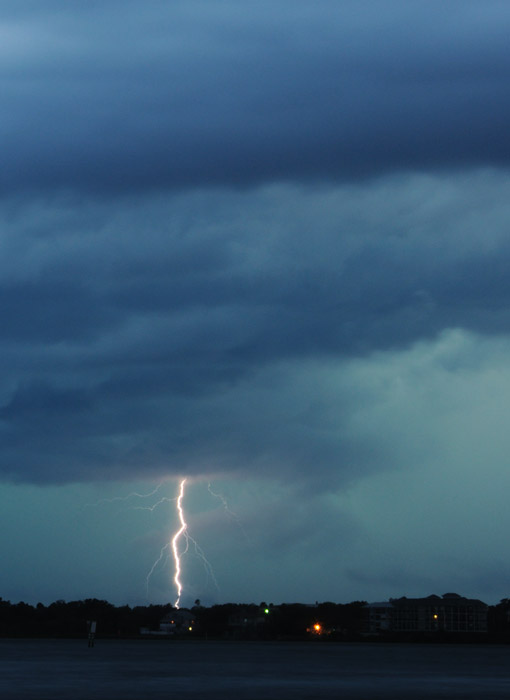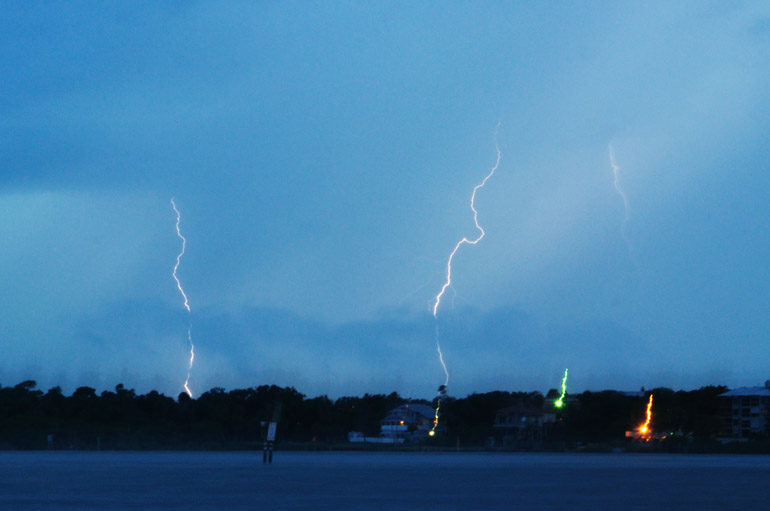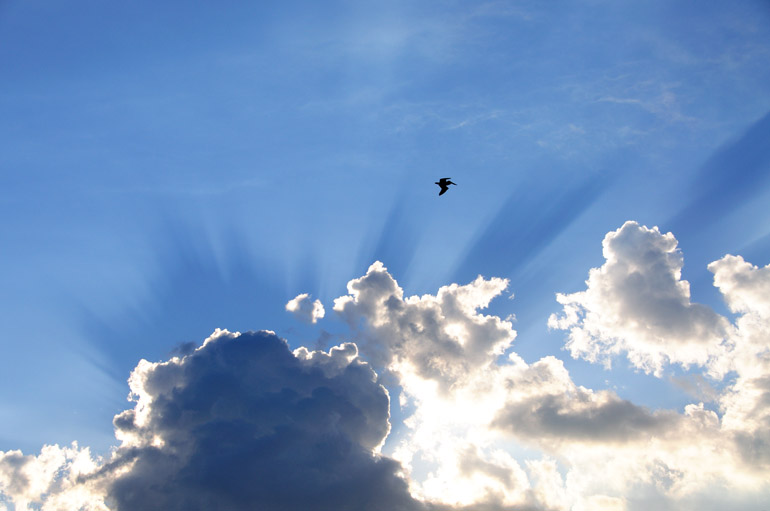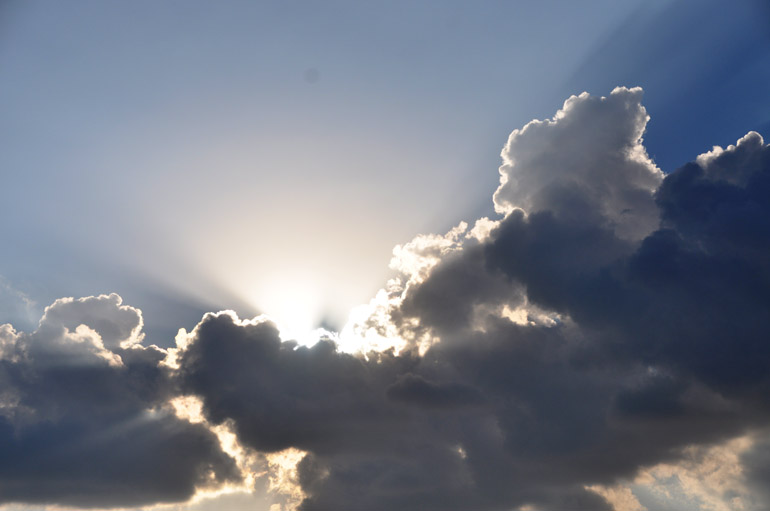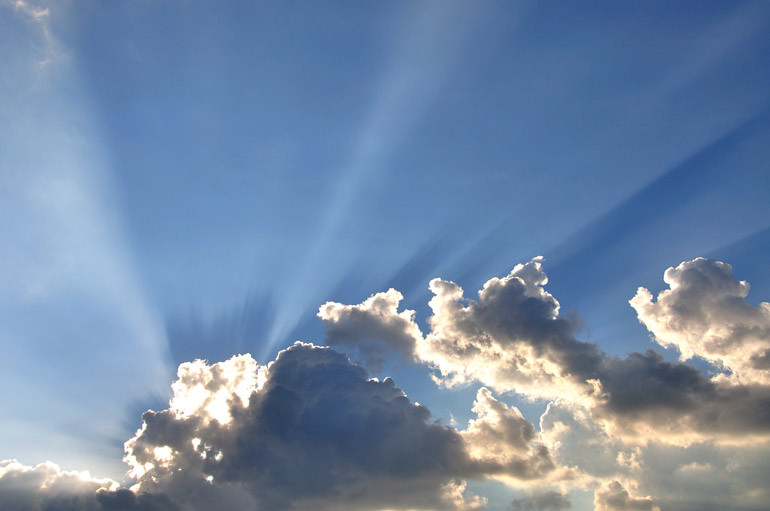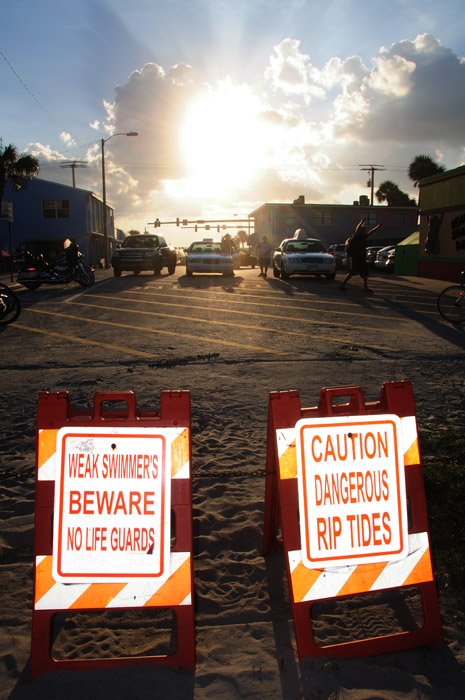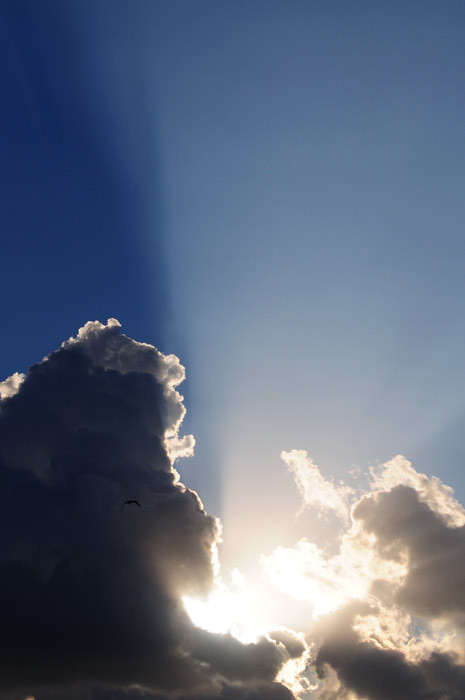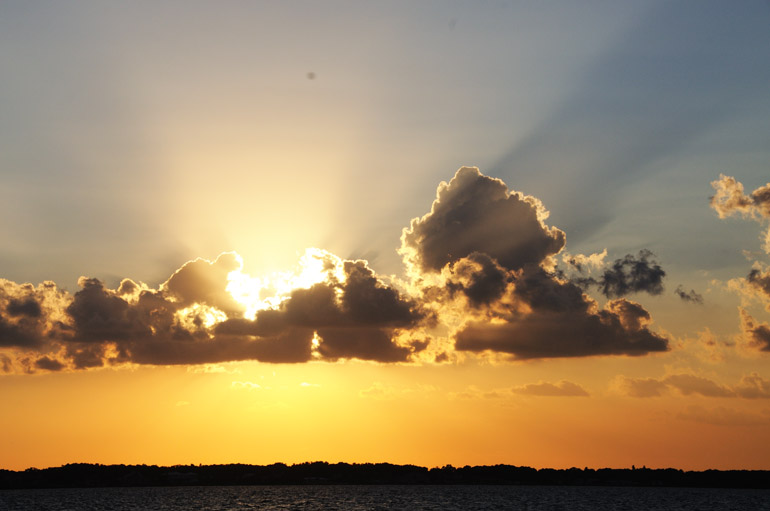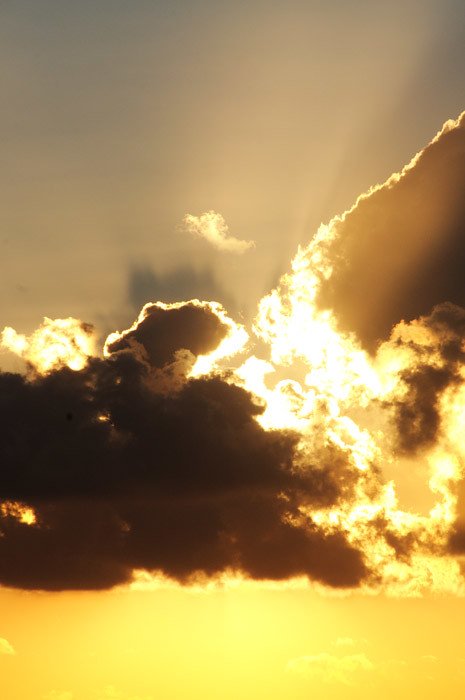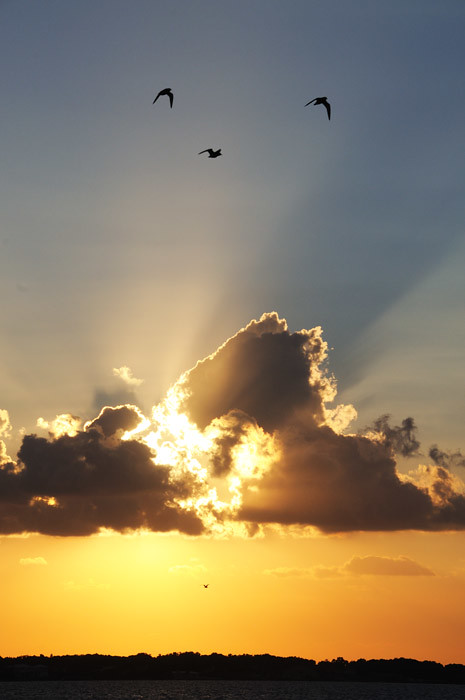Early Thursday morning, the moon was 99 percent full, with a sliver missing from the left side. Later in the day, it would rise as a full moon, the first of the autumn season. That's called the harvest moon. I took shots of it before (Thursday morning) and after (Saturday morning) it was full.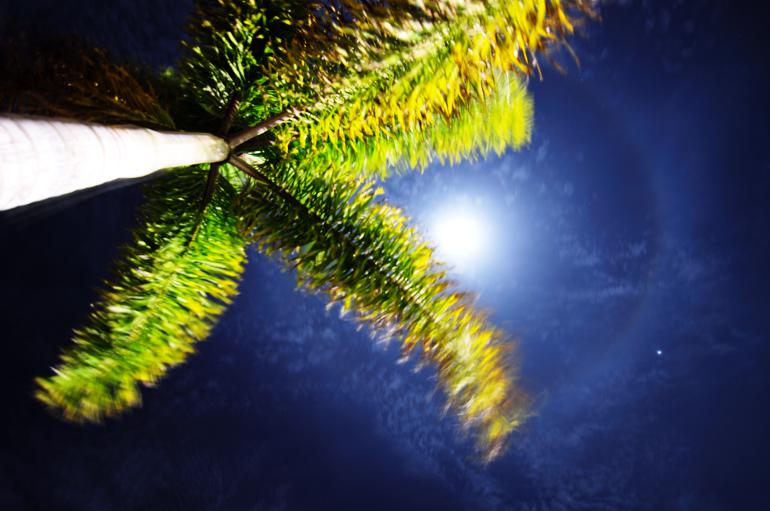
Early Saturday morning, a halo in the high, icy cirrus clouds indicated colder air over Florida. I see this phenomenon more often in the wintertime.
The best time to shoot a full moon is when it rises, around sunset. There's enough lighting left from the sun to illuminate surrounding things, such as clouds or buildings. I didn't have that advantage early Thursday morning. The subjects surrounding the moon always were poorly lit. This above shot is the only one that shows some clouds floating by, but with the moon properly exposed.
A sprinkle of magic and a hint of what's to come dangled in the heavens this week.
But it's not really all that magical. It's actually quite natural, and it happens from time to time.
This beauty is difficult to express. Most let it pass without pause. But I keep my eyes peeled for subtle gems, no matter how unappreciated by the rest. Only people who prefer the little things can truly enjoy this.
Outside my apartment early Thursday, an orange cat molested a palm tree by sharpening its forepaws on the trunk. Annoyed, I shot it. Then, crouching beside the arid carcass of a holly bush, I also photographed Jupiter and the moon as the celestial pair perused the sky together and watched clouds barrel off the ocean.
If the view was so good down here, I can't imagine what theirs was like.
It had been a while since I last photographed the night sky. I attempted a shot of the Milky Way Galaxy this summer. But in that instance, my camera was handheld. And the photos were grainy, blurry and totally unsatisfactory.
But Thursday morning, I dug out my rusty remote control and a seldom-used tripod. I wished to do it right. Or at least to try.
The moon wasn't fully matured -- only a 99 percent waxing gibbous. But later in the day, all of it rose at sunset -- an instance of splendor I missed because of work. And when I shot it again Saturday morning, the moon was a 98 percent waning gibbous.
No worries, though. Truth is, celestial phenomena were difficult to miss this week. Each night, the moon has been drawn to Jupiter, which was closer to Earth than it had been all year. It's an attraction that's especially appreciated at the dawn of a new season: The conjunction accentuates the harvest moon, the first full one of autumn. The moon was at its fullest a mere six hours after it officially became the fall.
And the fall season is the best season. I can't wait. Red maple leaves, candy corn, plastic jack-o'-lanterns, pumpkin whoopie pies, apple cider, mulled wine, stuffing. I'm even drinking hot coffee again.
And a snowflake? That's a prize this Floridian can only dream of.
I've been told that it's artsy to cut off your subject's head. So that's why I included only the bottom portion of the halo in this shot. ... Actually, that's not why. I was using an 18mm lens, which couldn't fit the entire halo.
For the halo shots in this post, I hung out near the employee entrance at Florida Today, using a palm tree for foreground.
Here's a behind-the-scenes look: Night photography of the sky in locations with lots of ambient light is difficult to pull off. Before I discovered a solution, many of my shots included horrific lens refraction and ghosts because of all the lamppost light hitting the camera. To solve that, I pulled out my golf umbrella -- which, ironically, I've never used for golf or rain -- and blocked the offending light during each exposure.
Thursday morning was mostly clear, but some clouds moved swiftly off the Atlantic Ocean and under the moon and Jupiter, which had rendezvoused with Earth's natural satellite all week.
A cat was clawing at the base of this palm tree while I was shooting. I subtracted one of its nine lives. This was a longer exposure that completely blurred the clouds, a desired effect.
When moonlight shines through moisture-rich clouds, iridescence often results. Even in the black night, color can be seen in the sky.
The clouds cleared Thursday, and I cleared out.

